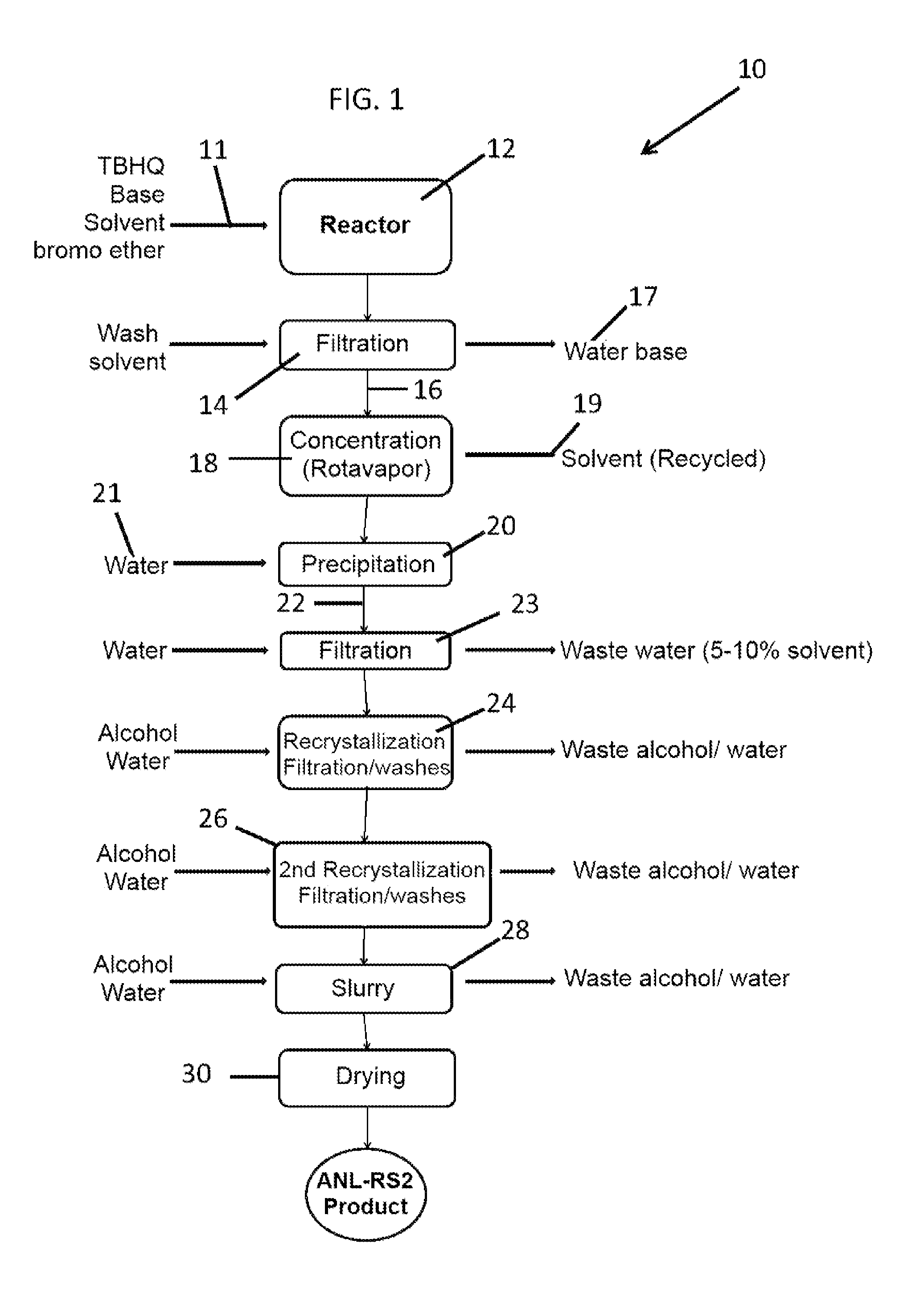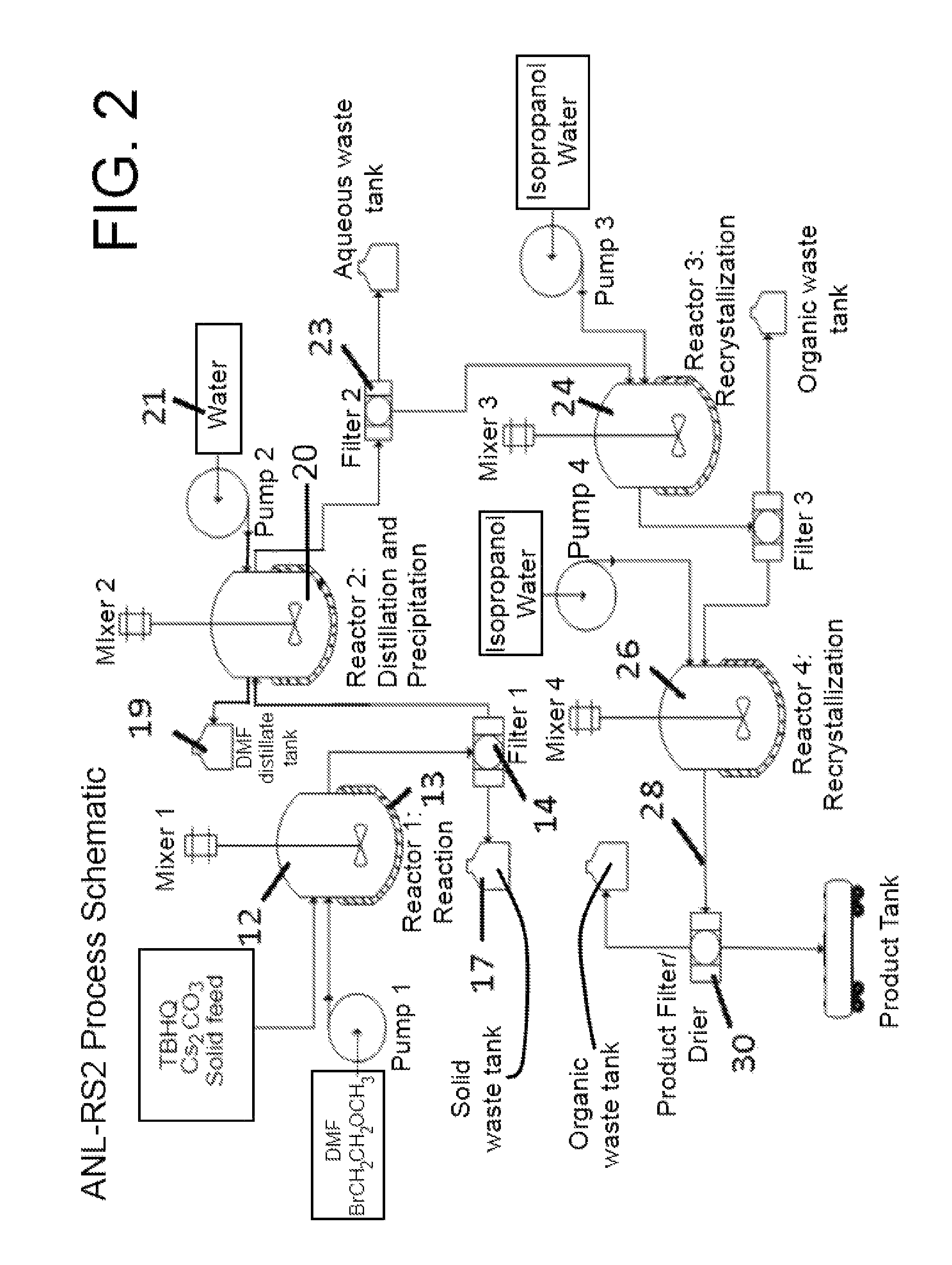Process for producing redox shuttles
a technology of redox shuttle and redox ions, which is applied in the direction of electrochemical generators, organic chemistry, ether preparation, etc., can solve the problems of unsuitable industrial scale-up, inability to meet the requirements of inert environments and expensive, and high cost of reagents, so as to facilitate industrial processes for lithium ion battery electrolytes and ensure safety
- Summary
- Abstract
- Description
- Claims
- Application Information
AI Technical Summary
Benefits of technology
Problems solved by technology
Method used
Image
Examples
example 1
[0081]An embodiment of the aforementioned process depicted in FIG. 1 follows:
[0082]A glass reactor (20 L, jacketed, Chemglass) equipped with drain valve, internal temperature probe, reflux condenser, gas inlet / outlet adapters and powder port was flushed with argon. The jacket of the reactor was connected to a mechanical means for controlling the interior surfaces of the reactor, such means including a heating / chilling circulator, such as a Huber 430. Aside from the use of thermal conduction as a means to control temperature, controlled addition of reactants can be utilized exclusively, or in combination with the mechanical thermal conduction means, as discussed supra.
[0083]The reactor was charged with DMF (12 L, BDH 111510D) and the stirring speed set to 120 rpm. 2,5-Di-tert-butylbenzene-1,4-diol (1,312 g, 5.90 mol, 1.0 eq, Aldrich MKBC8025V) was added followed by cesium carbonate (5,758 g, 17.67 mol, 3.0 eq, Alfa B09W012). The circulator was set to control the process (internal rea...
PUM
| Property | Measurement | Unit |
|---|---|---|
| Time | aaaaa | aaaaa |
| Mass | aaaaa | aaaaa |
| Molar density | aaaaa | aaaaa |
Abstract
Description
Claims
Application Information
 Login to View More
Login to View More - R&D
- Intellectual Property
- Life Sciences
- Materials
- Tech Scout
- Unparalleled Data Quality
- Higher Quality Content
- 60% Fewer Hallucinations
Browse by: Latest US Patents, China's latest patents, Technical Efficacy Thesaurus, Application Domain, Technology Topic, Popular Technical Reports.
© 2025 PatSnap. All rights reserved.Legal|Privacy policy|Modern Slavery Act Transparency Statement|Sitemap|About US| Contact US: help@patsnap.com



